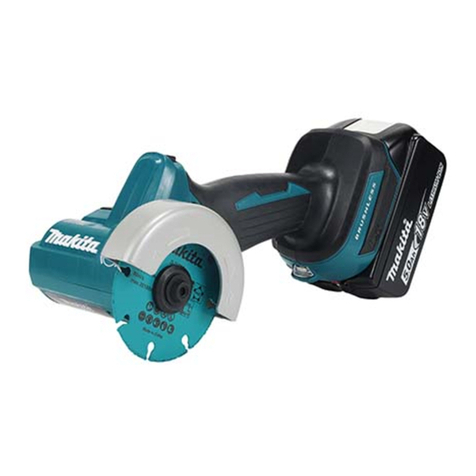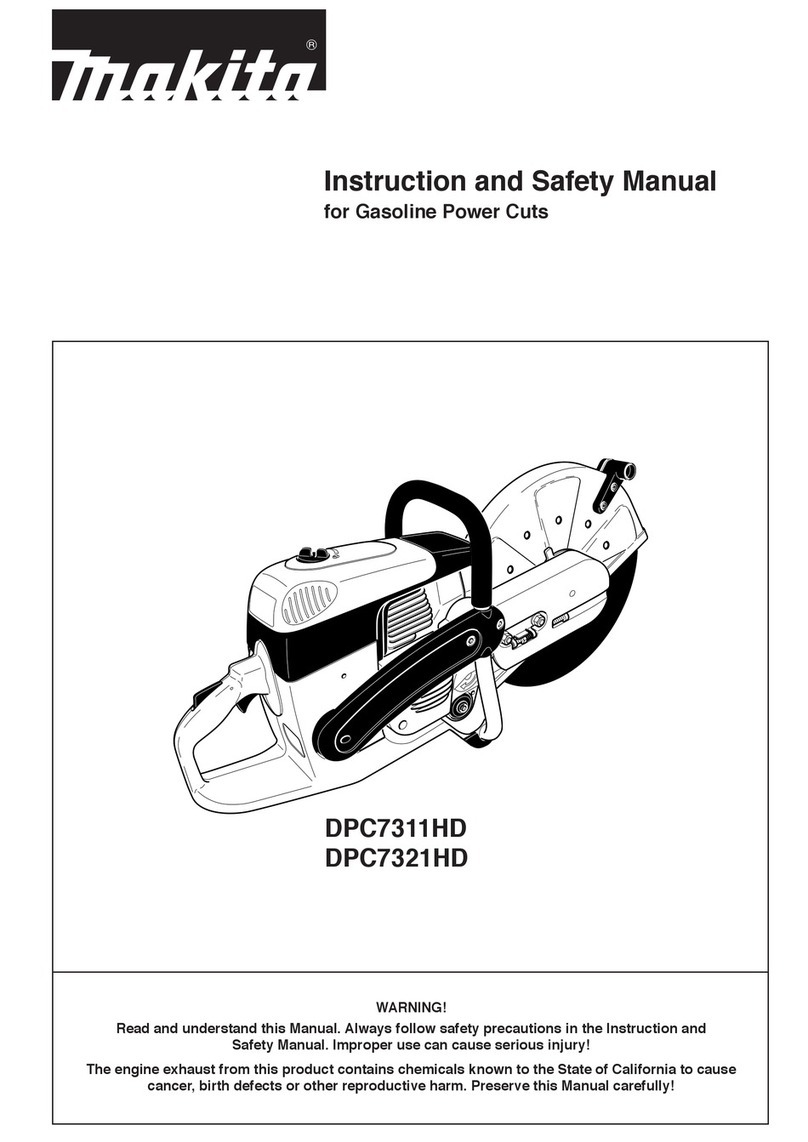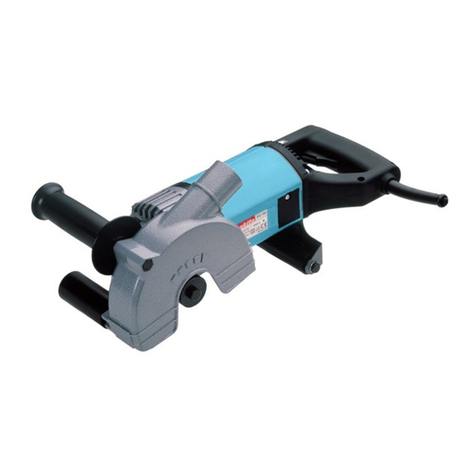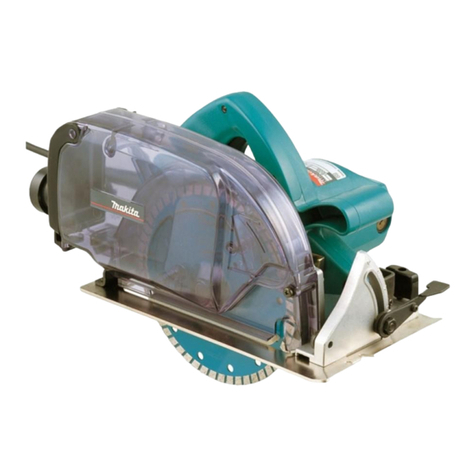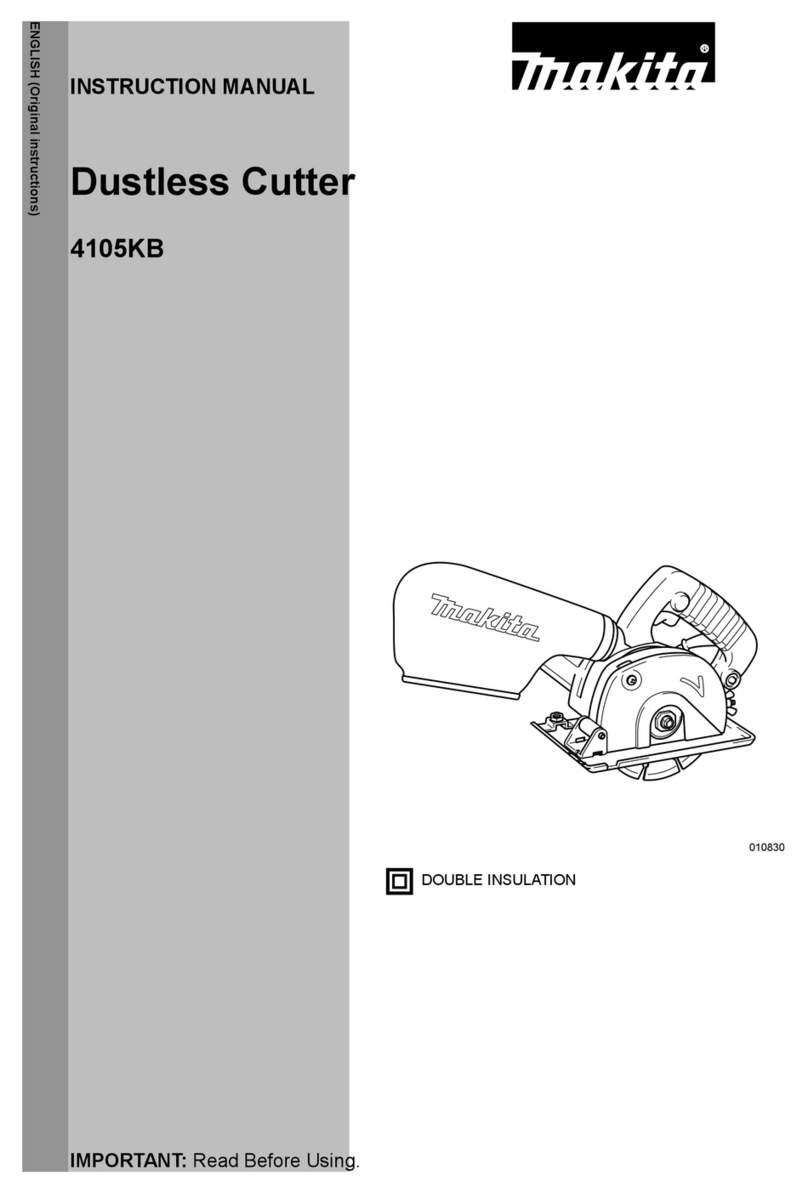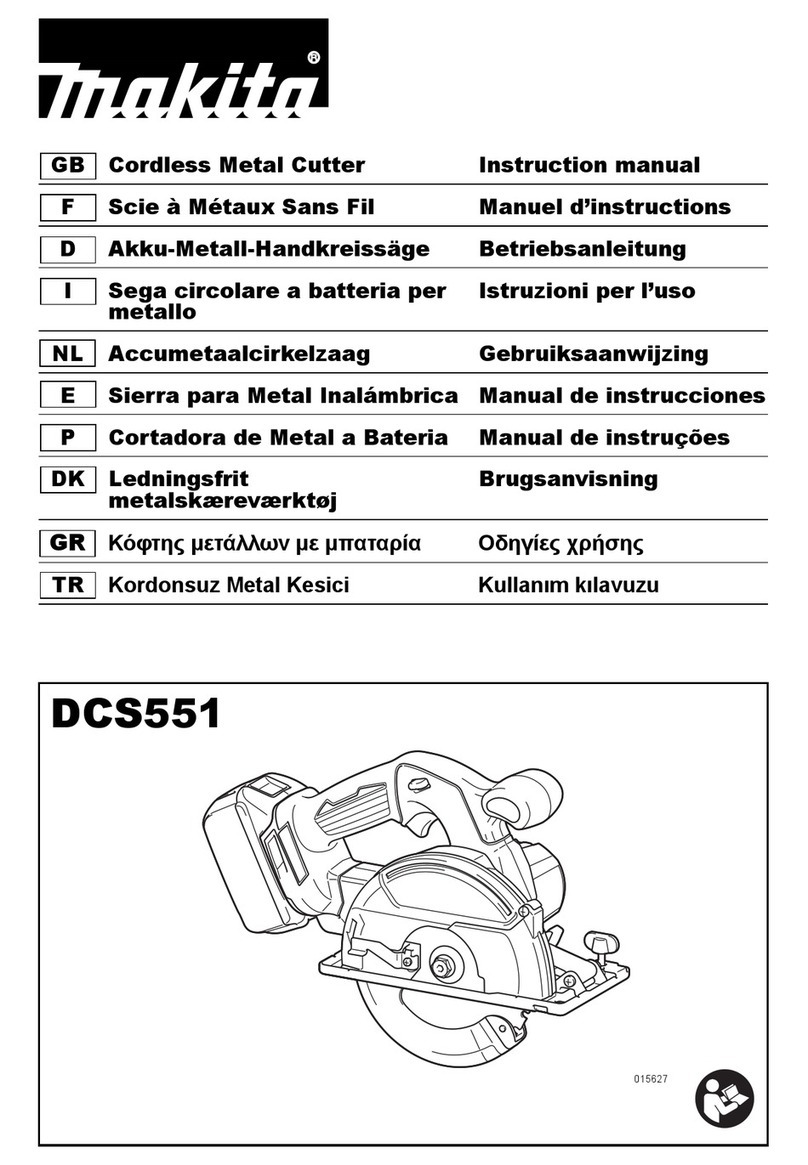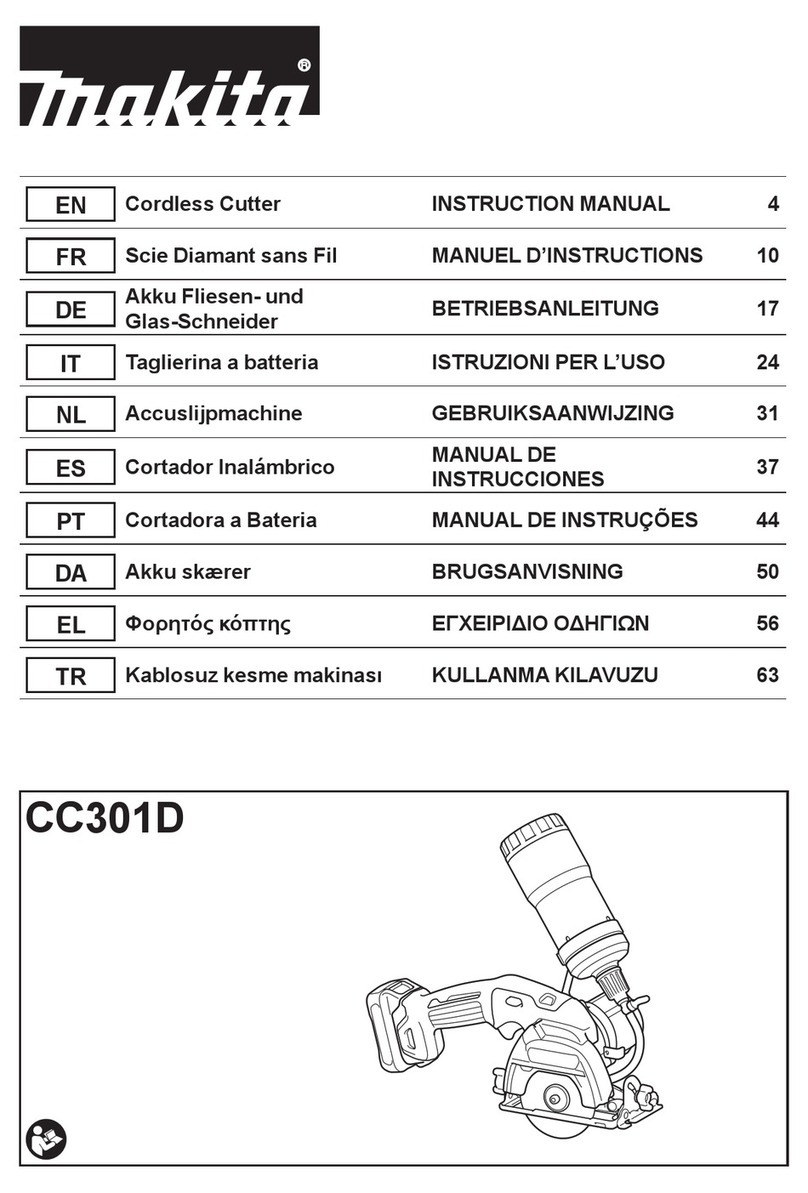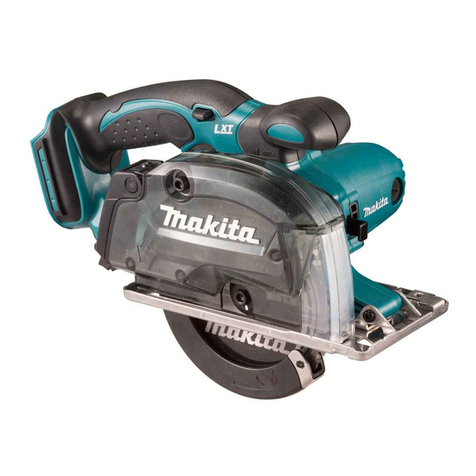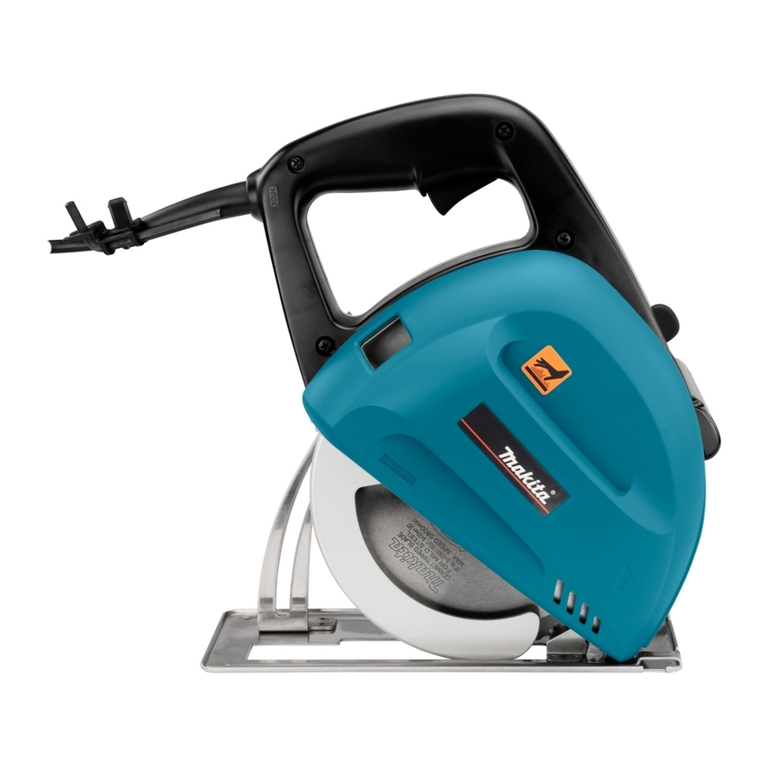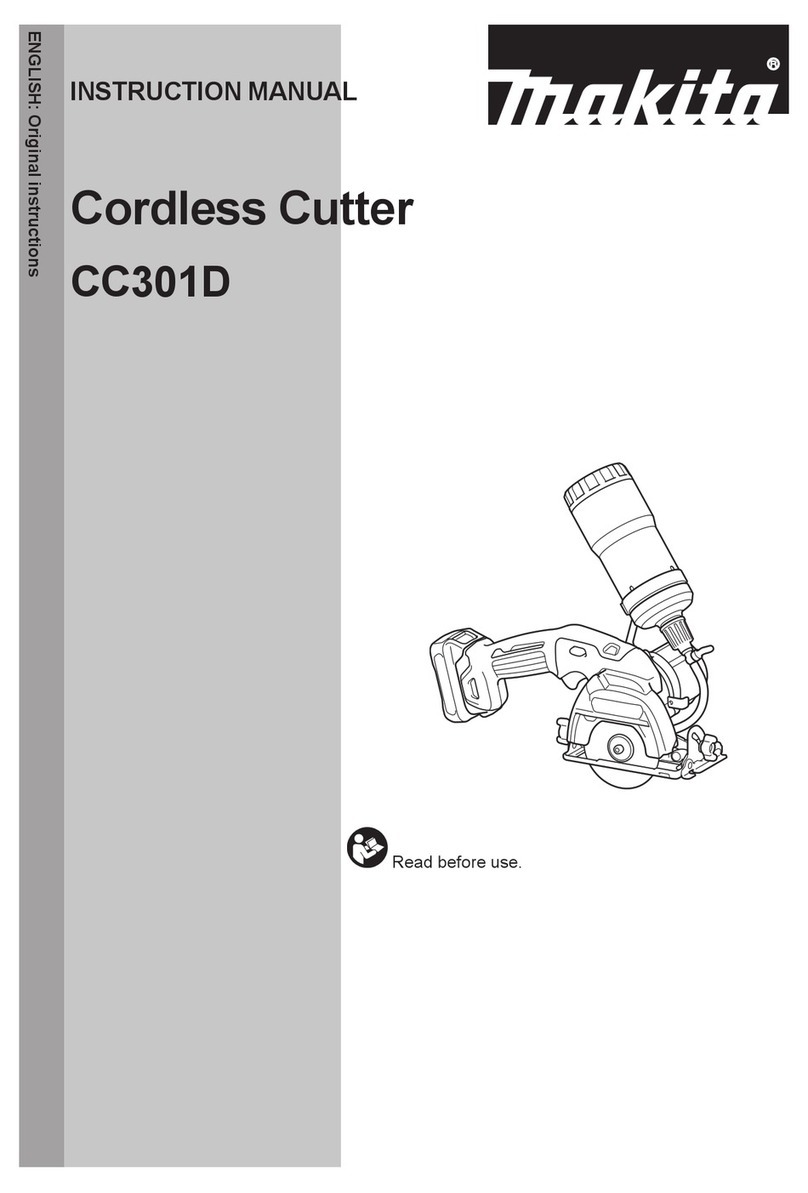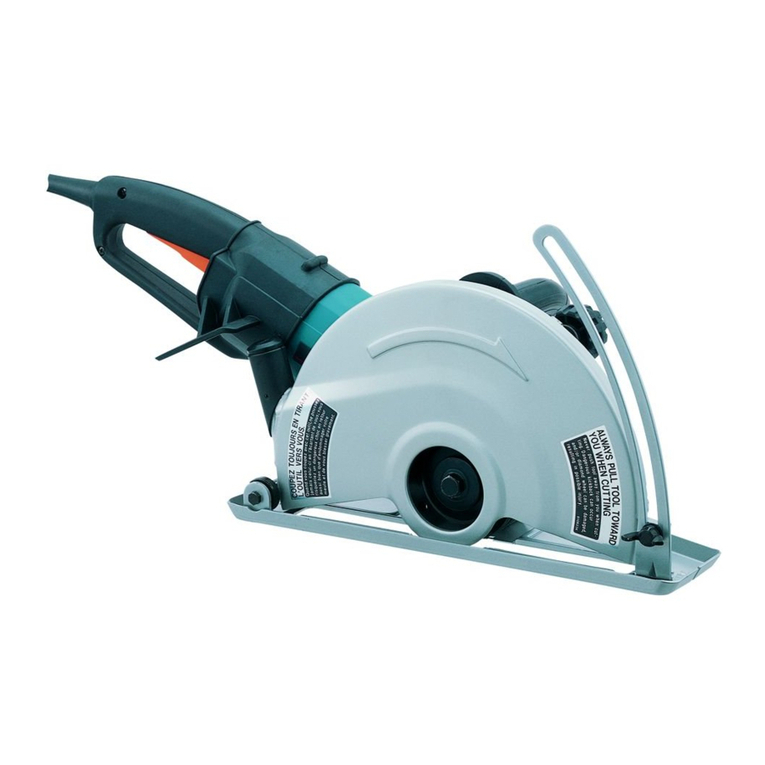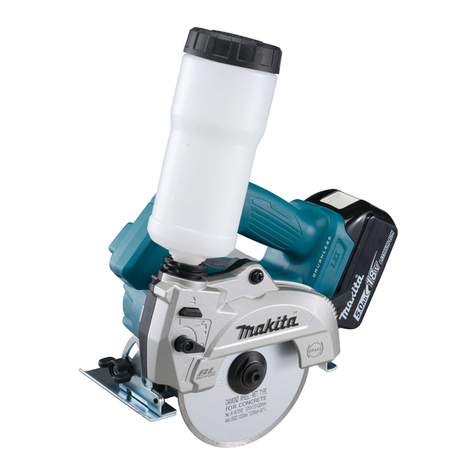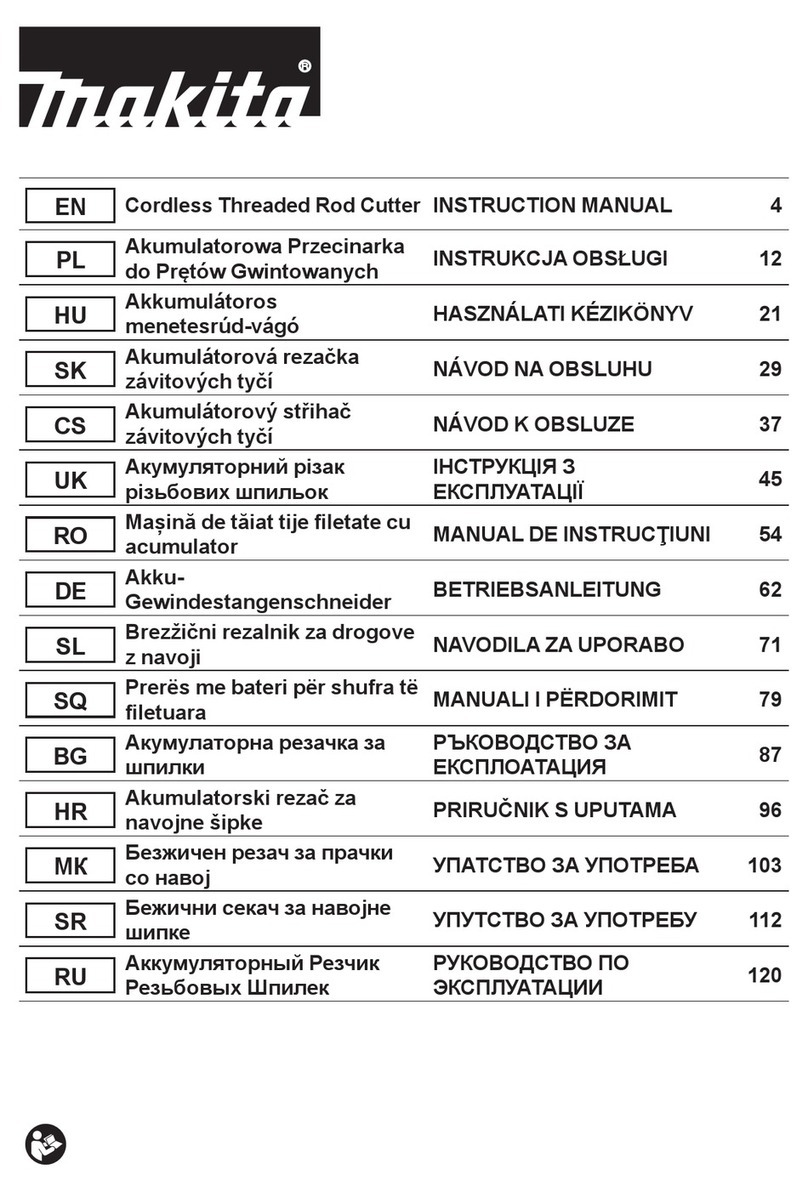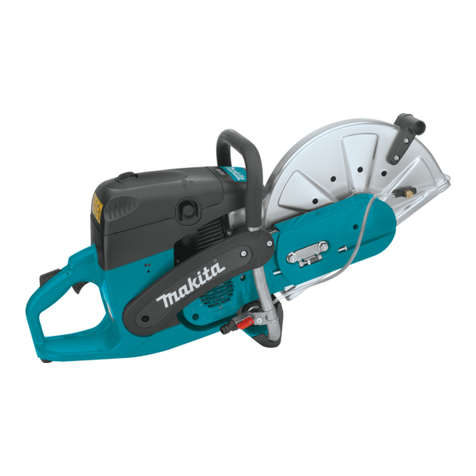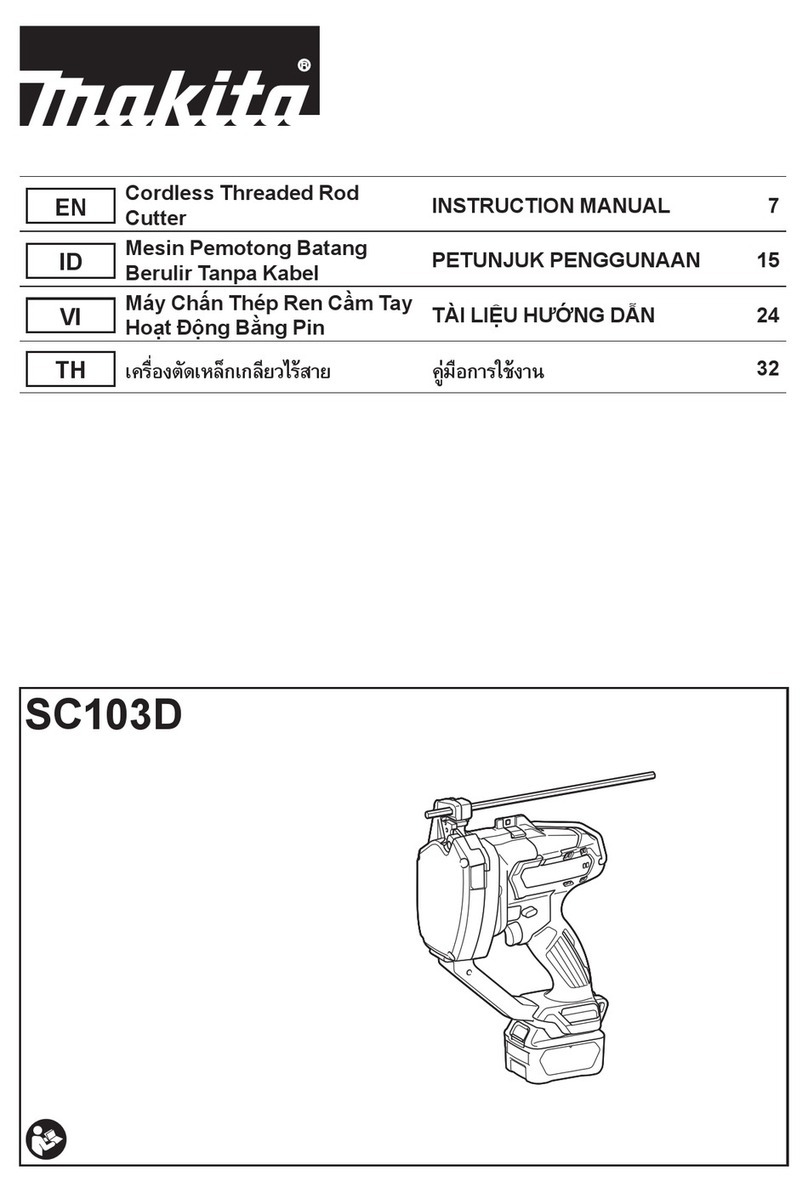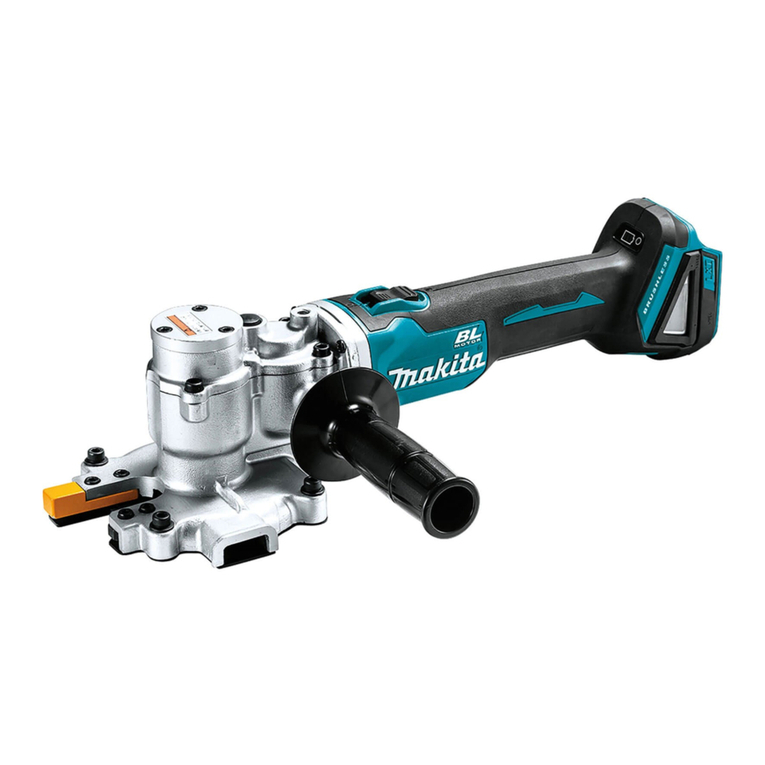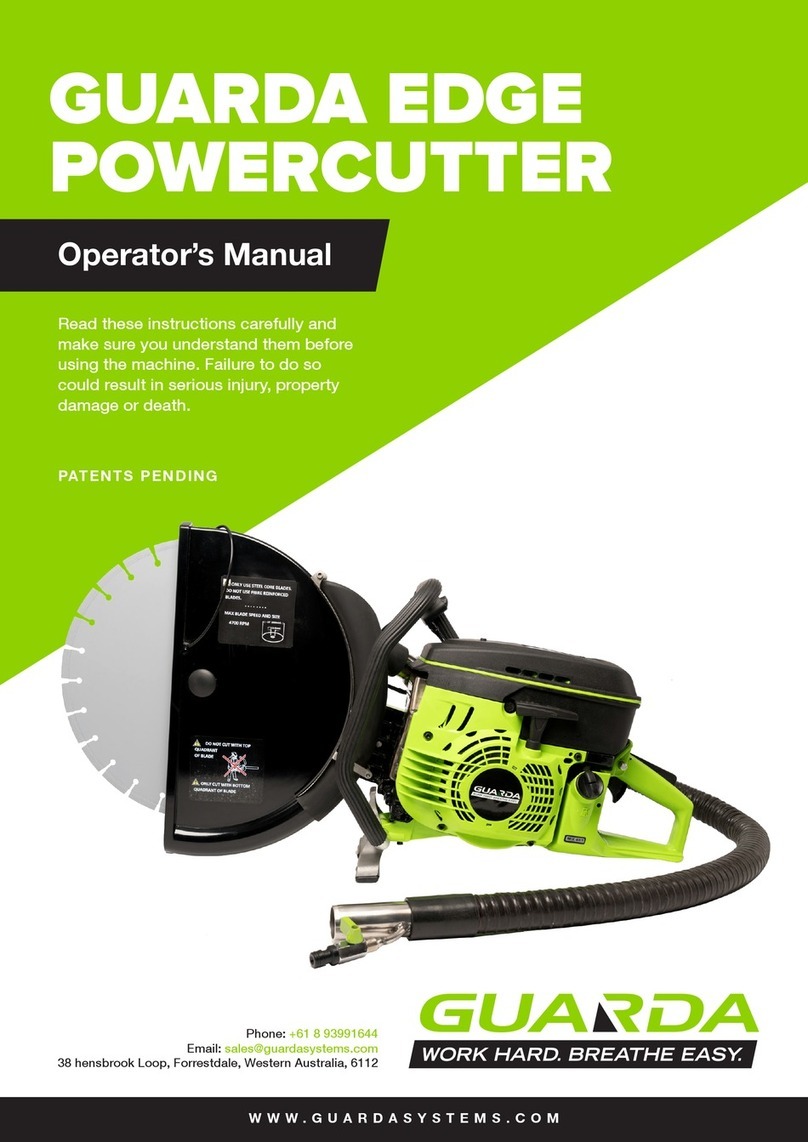7
16. Never attempt to saw with the tool held upside
down in a vise. This is extremely dangerous and
can lead to serious accidents.
17. Wear safety goggles and hearing protection dur-
ing operation.
SAVE THESE INSTRUCTION.
FUNCTIONAL DESCRIPTION
CAUTION:
• Always be sure that the tool is switched off and
unplugged before adjusting or checking function on the
tool.
Adjusting the depth of cut (Fig. 1)
Loosen the lever on the depth guide and move the base
up or down. At the desired depth of cut, secure the base
by tightening the lever.
CAUTION:
• After adjusting the depth of cut, always tighten the lever
securely.
Sighting (Fig. 2)
When cutting, align the A position on the front of the base
with your cutting line on the workpiece.
Switch action (Fig. 3)
CAUTION:
• Before plugging in the tool, always check to see that
the switch trigger actuates properly and returns to the
“OFF” position when released.
To prevent the switch trigger from being accidentally
pulled, a lock-off button is provided.
To start the tool, push in the lock-off button and pull the
switch trigger. Release the switch trigger to stop.
ASSEMBLY
CAUTION:
• Always be sure that the tool is switched off and
unplugged before carrying out any work on the tool.
Installing or removing saw blade
CAUTION:
• Use only the Makita wrench provided to install or
remove the blade. Failure to do so may result in over-
tightening or insufficient tightening of the hex bolt. This
could cause serious injury to the operator.
• Do not touch the blade with your bare hand immedi-
ately after cutting, it may be extremely hot and could
burn your skin. Put on pair of gloves when removing a
hot blade.
To remove the blade, first push and turn the knob which
secures the dust cover clockwise to the Osymbol and
remove the dust cover. Press the shaft lock so that the
blade cannot revolve and use the hex wrench to loosen
the hex bolt counterclockwise. Then remove the outer
flange and blade. (Fig. 4 & 5)
To install the blade, follow the removal procedure in
reverse. Always install the blade so that the arrow on the
blade points in the same direction as the arrow on the
blade case.
BE SURE TO TIGHTEN THE HEX BOLT SECURELY.
(Fig. 6)
After installing the blade, replace the dust cover. Slide the
dust cover carefully so that the slot of its front fits the rib
of the blade case. Make sure the dust cover fits properly
then push and turn the knob counterclockwise to the z
symbol. (Fig. 7)
Rip fence (guide rule) (Accessory) (Fig. 8)
The handy rip fence (guide rule) allows you to do extra-
accurate straight cuts. Simply slide the rip fence up
snugly against the side of the workpiece and secure it in
position with the clamp screw on the front of the base. It
also makes repeated cuts of uniform width possible.
OPERATION
CAUTION:
• Never twist or force the tool in the cut. This may cause
motor overload and/or a dangerous kickback, resulting
in serious injury to the operator.
Hold the tool firmly with both hand. Set the base plate on
the workpiece to be cut without the blade making any
contact. Then turn the tool on and wait until the blade
attains full speed. Move the tool forward over the work-
piece surface, keeping it flat and advancing smoothly
until the cutting is completed. Keep your cutting line
straight and your speed of advance uniform. (Fig. 9)
The sight window in the base makes it easy to check the
distance between the front edge of the saw blade and the
workpiece whenever the blade is set to the maximum
depth of cut. (Fig. 10)
NOTE:
• When making a miter cuts etc., sometimes the lower
guard does not move easily. At that time, use the
retracting lever to raise the lower guard for starting cut
and as soon as blade enters the material, release the
retracting lever. (Fig. 11)
CAUTION:
• Do not use a deformed or cracked blade. Replace it
with a new one.
• Do not stack materials when cutting them.
• Do not cut hardened steel, stainless steel, aluminum,
wood, plastics, concrete, tile, etc. Cut only mild steel.
• Do not touch the saw blade, workpiece or cutting chips
with your bare hand immediately after cutting, they may
be extremely hot and could burn your skin.
•Always use the carbide-tipped saw blades appro-
priate for your job. The use of inappropriate saw
blades may cause a poor cutting performance and/or
present a risk of personal injury.
Chip disposal
CAUTION:
• Always be sure that the tool is switched off and
unplugged before removing or installing the dust cover.
• The dust cover may become hot due to hot chips. Do
not touch the cutting chips or dust cover with your bare
hand.
When the cutting chips are visible through the sight win-
dow, dispose of them. (Fig. 12)
Push and turn the knob clockwise to the Osymbol and
remove the dust cover. Dispose of the cutting chips accu-
mulated inside the dust cover. (Fig. 13)
